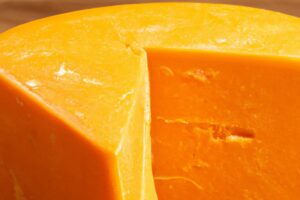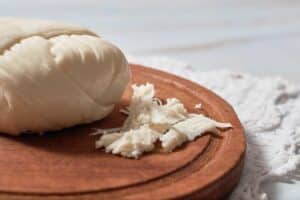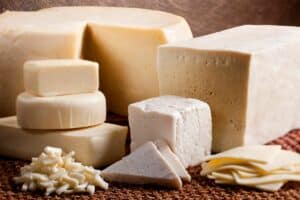What do you call mozzarella and cream in a hot cheese pouch? — Burrata!
Burrata means “buttery” in Italian. It was created by Apulian cheesemakers in the early 1900s as a way to use up leftover mozzarella pieces.
Burrata has a buttery taste and a creamy texture. When it’s sliced open, thick cream oozes out. It can be served with almost anything, including salads, roasted veggies, toasts, pizzas, pasta, you name it — but it’s also delicious on its own.
Its replacements? Mozzarella, bocconcini, feta, and cream cheese. Let’s look at how these four kinds of cheese may fill in for burrata.
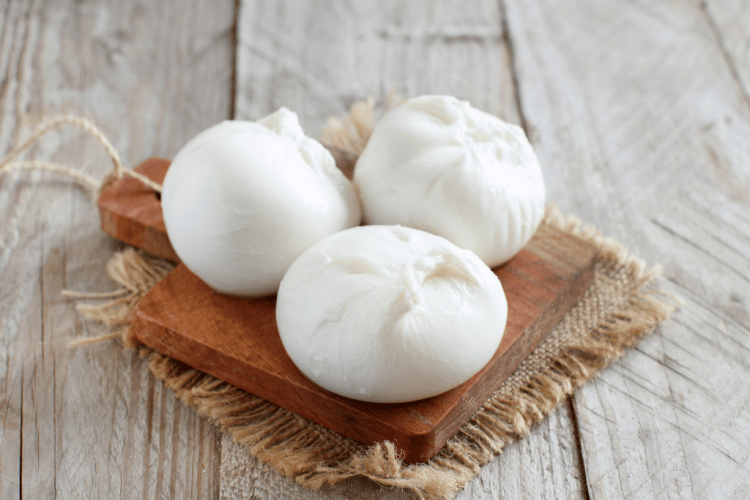
Burrata Alternatives
- Mozzarella cheese
- Bocconcini cheese
- Feta cheese
- Cream cheese
1. Mozzarella Cheese
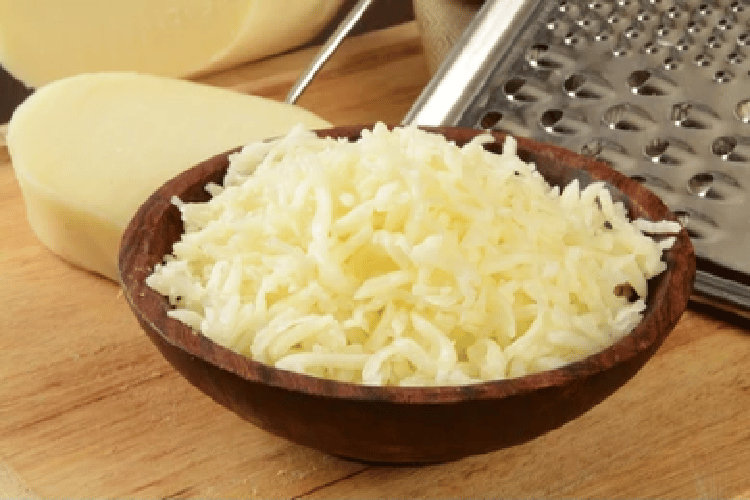
As we said, leftover mozzarella was once used to make burrata in Italy.
Mozzarella is a firm, elastic ball of curd made from cow or water buffalo milk. It’s well-known for its flexible texture, somewhat acidic flavor, and versatility in meals. The main difference between burrata and mozzarella is that burrata is more creamy than mozzarella.
It’s usually made by boiling curd, which is then stretched by hand and formed into a moist ball. The fresher it is when served, the better. On the other hand, brining the cheese will increase the salt content, giving it a sharp, salty flavor.
Mozzarella can easily replace burrata cheese in pizza, pasta, or salads. We recommend you try it in a Caprese salad with sliced tomatoes and basil.
2. Bocconcini Cheese
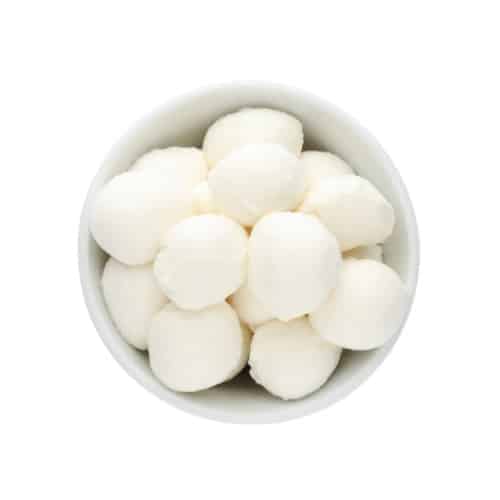
Bocconcini is Italian for “little bites.” These mozzarella-like balls are the size of an egg — they are a Naples specialty and are prepared from cow or water buffalo milk, much like mozzarella.
Although the interior of bocconcini is not creamy, it does have the delicate, tangy, and creamy flavor of burrata cheese.
Their elastic texture works well when served with salads or covered in prosciutto. These bite-sized delights can be a beautiful complement to a cheese plate, salad, pizza, or antipasto.
3. Feta Cheese
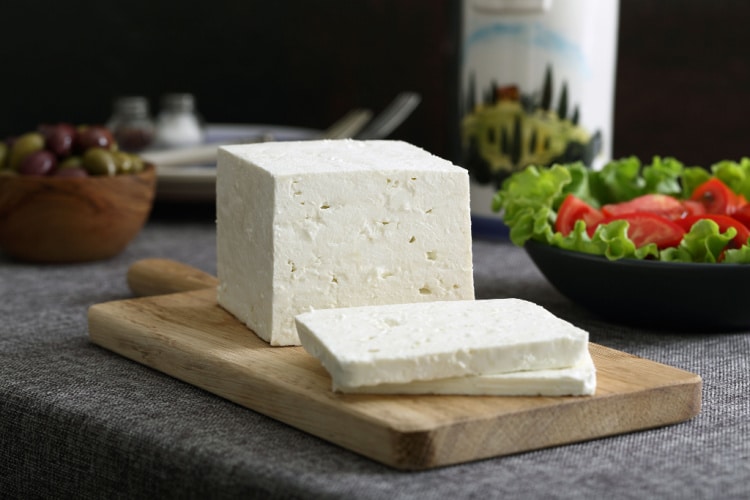
Greek-born feta has become a popular cheese worldwide thanks to its creamy blend of salty, acidic, and sour notes.
It’s made from sheep’s milk or a combination of sheep and goat milk. The texture varies with age — younger feta has a texture more akin to burrata, meaning it’s more creamy and spreadable. Older feta, on the other hand, is drier and crumbly.
While some feta cheese is creamy and spreadable like burrata, most varieties are also saltier and tangier.
It can be served raw on a cheese plate or in a salad or melted on pizza, pasta, pie, or eggs.
If you can’t find Feta cheese but want similar flavor, feel free to use any of the common feta cheese substitutes.
4. Cream Cheese
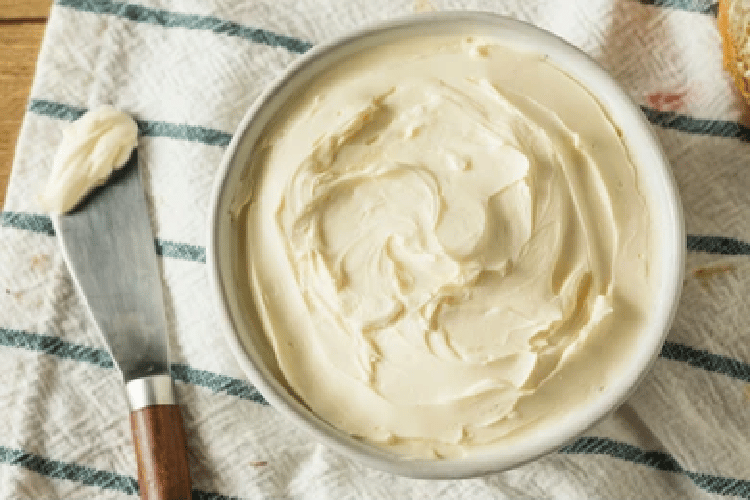
Cream cheese is one of the most famous cheese varieties in the US and is created using cream and unpasteurized cow’s milk. It has one of the highest shelf lives out of all the alternatives to burrata — from 3 to 6 months.
Cream cheese has a mild, sweet flavor with a delightful hint of sharpness, making it very similar to burrata. It is spreadable but not as creamy as burrata. It comes in various flavors, like strawberry, chive, onion, smoked salmon, pineapple, paprika, and many more.
What to eat with cream cheese? It is widely used in sweet recipes like cheesecakes and frostings. It also pairs nicely with bagels and pastries.
Got excess cream cheese? You can easily store cream cheese in the freezer.
Conclusion
Now that you know the best burrata cheese alternatives, you can start looking for them at your neighborhood Italian deli or nearest cheese store.
You just have to decide whether you’ll go for the good old mozzarella, bite-sized bocconcini, milky cream cheese, or salty feta.
We say don’t be cheesy and try all of them! You’ll be amazed at how delicious they are. They go well with everything, from salads and pasta to toast, bagels, and pizza.


